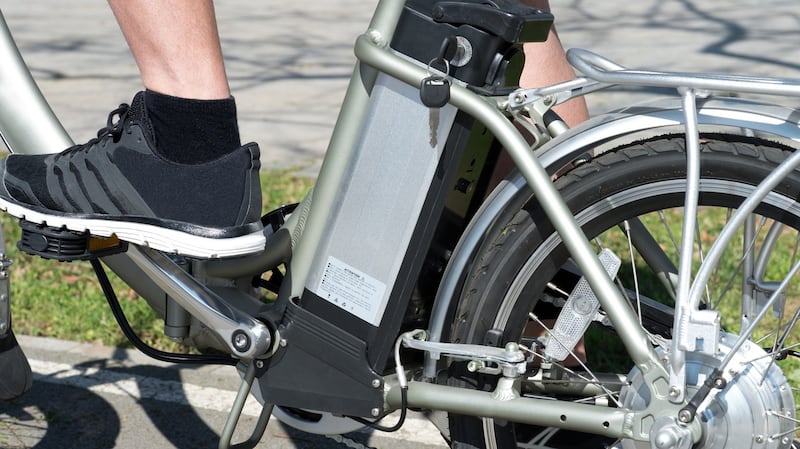On a cycling tour along the coast of south-west Sardinia, Kathleen Robinson thanked God she was riding an electric bike up the winding heights. But she wished she'd had a class beforehand on the proper etiquette.
She didn't realise the hum of her motor would annoy some of the traditional cyclists on the tour, nor was she certain whether to spin in the back of the pack or move out front. The 60-year-old had enough sense to gloat tactically, like when she sailed past a friend grinding up a hill and "gave him my Queen Elizabeth wave".
“There wasn’t a problem as long as I didn’t stay next to someone who was struggling hard,” she says.

Over the past two years, bike tour companies large and small have seen a spike in demand for e-bikes and have ramped up their battery-powered fleets and the equipment needed to haul the heavier machines. The bikes now are used by 10 to 30 per cent of riders on tours, operators say, and that percentage is only increasing. "E-bikes are revolutionising bike tours," says Maria Elena Price, co-owner of ExperiencePlus! Bicycle Tours, which offers itineraries in 20 countries.
Pedalling kick-starts an e-bike’s motors, which cut off at about 25km/h. Riding an e-bike can feel like having wind at your back or a pair of bionic legs. That has opened tours to non-cyclists who are less fit, people once sidelined by injury and older cyclists looking to extend their riding days. Like a marriage counsellor, they unite couples who once holidayed separately or joined bike tours reluctantly.
But as with many innovations in sports – think high-tech racing suits for swimmers and sticky gloves for football players – e-bikes have created their own set of tensions and hand-wringing over the artificial advantage.
While most on the tours say e-bikes make for more harmonious rides with fewer stressed-out stragglers, the bikes have also given rise to incessant corny jokes – “I didn’t think that hill was that hard,” said the e-biker – and no shortage of muttered obscenities from drained riders as e-bikers nonchalantly breeze by.
ExperiencePlus!, which is based in the US, limited e-bikes to two per trip until 2017, when requests multiplied, Price says. Guides now have an orientation script explaining that e-bikes are “not mini-mopeds” and asking e-bikers “to respect your fellow push-bike riders as you pass them effortlessly on a climb, and for those of you on push bikes to not look ‘down’ on the e-bikers”.
Rarely does a guide need to reprimand a rider, says Alain Rimondi, a tour leader in Italy. But when the sides are evenly mixed, "it turns into an interesting social experiment".
A bit guilty
At the start, e-bikers can feel a bit guilty switching on the motor, he says. In the first days, they tend to fly past the others, especially on hills, and some even arrive early for lunch. Later, e-bikers usually hang back and the group is more compact.
At the end of rides, the e-bike riders are happy and refreshed from their workout, Rimondi says, and push-bike riders often ask if they can try an e-bike.
Battery-powered bikes were invented more than a century ago. But they remained a clunky oddity until this decade, taking hold on riding tours, first in Europe before then spreading to the US.

The costs can be substantial: e-bikes typically run at least double the price of a regular hybrid touring bike.
The staff at Bicycle Adventures of Redmond, Washington, had seemingly endless debates when it tested e-bikes six years ago. According to Todd Starnes, the owner, they argued about whether e-bikes were cheating, how e-bikers would be treated, whether the tour make-up would be changed and more.
The verdict? “In some ways, I think it makes the trip a little better,” Starnes says.
For one, tours begin with less anxious questions about distance and elevation. “The person on the e-bike is less concerned at that point about whether they can keep up and more concerned about what the others think about them being on an e-bike,” Starnes says. “And they soon learn that nobody cares.”
E-bikes also make it easier for guides; less sheep-dogging laggards who delay the rest of the group. “Everybody is at lunch at the same time,” says Starnes.
An e-bike was the solution for Hope and Richard Wilson last autumn. Hope Wilson had pinched a nerve in her leg, but her husband had his mind set on a foliage cycling tour with three other couples. "It made it a lot more fun when you can keep up," Hope Wilson, (57), says. "You're going by beautiful estates and beautiful landscape, and you get to share it with somebody instead of lagging at the back."
Joe DeYoung, a former amateur racer who leads rides on parts of the Tour de France route, is in favour of e-bikes – but not for himself.
He remembers straining up the legendary Mont Ventoux in France last year, then hearing humming and seeing two e-bikes blow past him. “About a mile from the top, where it really gets steep, they ran out of batteries and I went by them,” says the 67-year-old. “I got my revenge.”
But as more commuters and recreational cyclists embrace e-bikes, and as technological advances continue to make them cheaper and sleeker, the influx on bike tours is likely to continue. – New York Times










